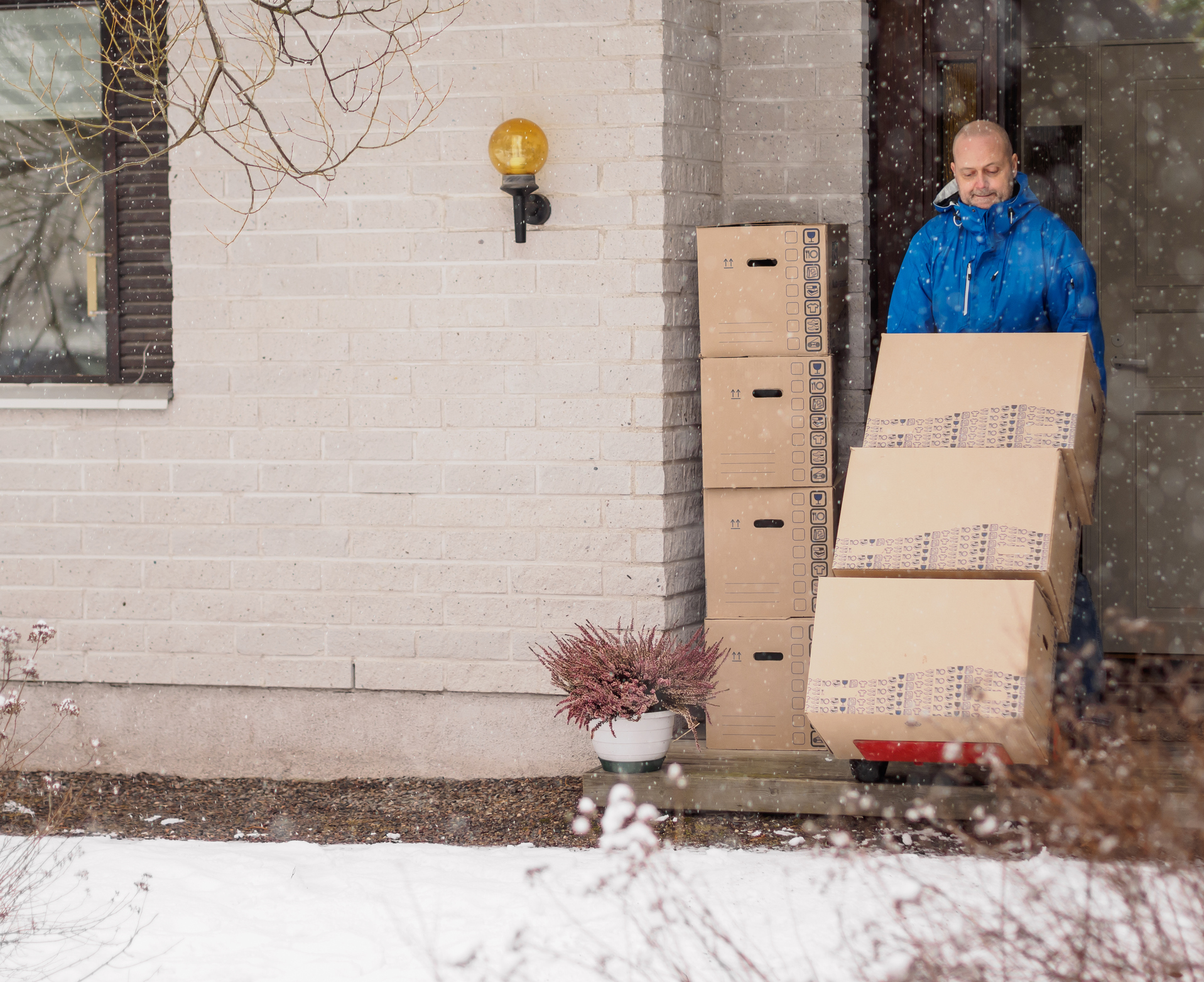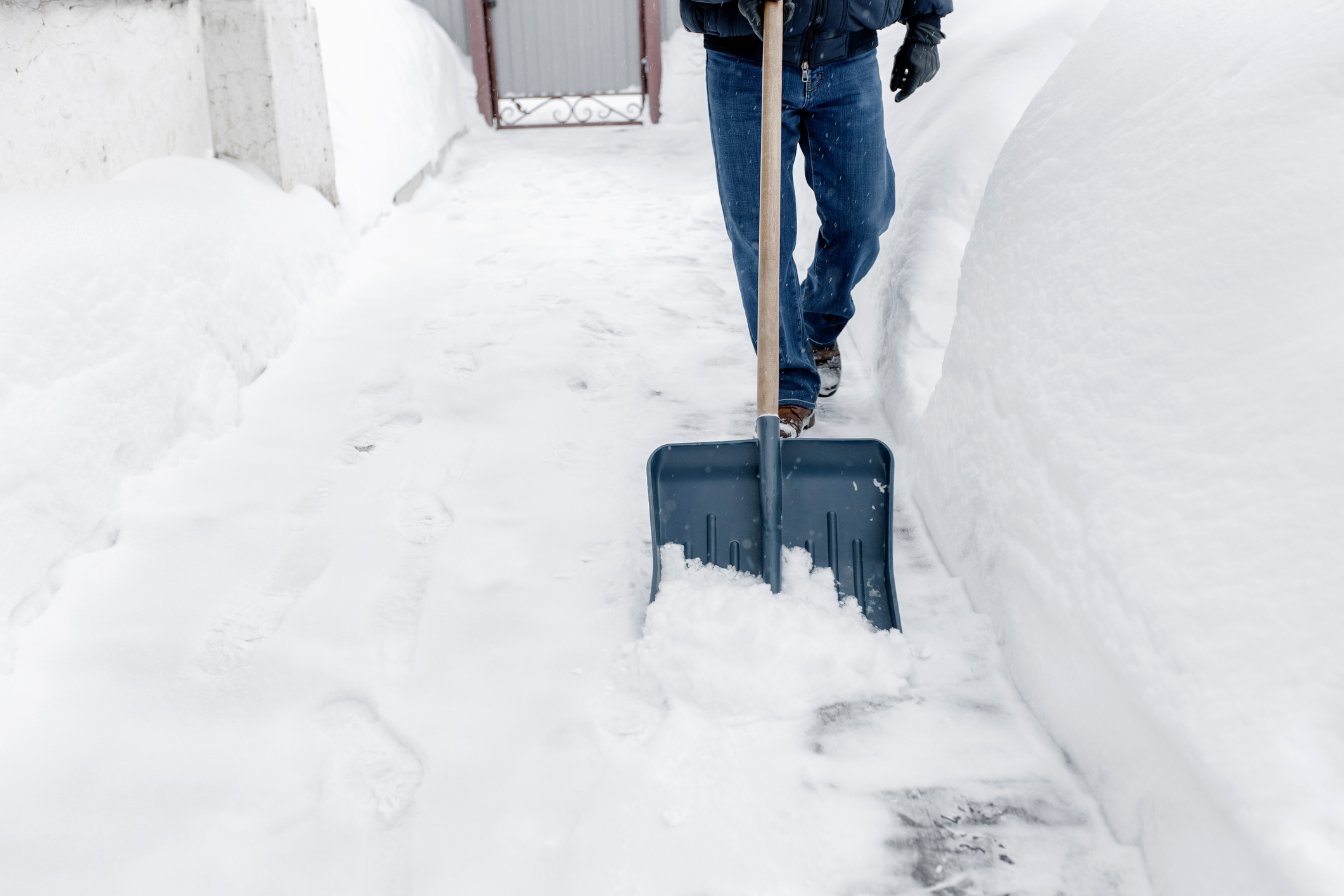The end of the year is often an exciting time filled with holiday cheer, lots of food, and the promise of a brand new year just on the horizon. But for many, the winter months also include the added stress of family gatherings, holiday shopping, and depending on where you live, maybe even a few inconvenient snowstorms and blizzards.
With so much going on during the last few months of the year, the last thing you probably want to worry about is relocating to a new home. But if you need to move in the winter for whatever reason, don’t panic. Planning and executing a move anytime from November through February may not be ideal, but it’s incredibly doable.
Related: Smart Advice for People Moving During the Holidays
Is it bad to move in winter?
If you have a choice between moving during the warmer spring or summer months or in the dead of the snowy winter season, of course it’s better to choose the former. The main reason for this is that there’s less chance for bad weather like rain, hail, sleet, and snow during the spring and summer months.

Related: Helpful Tips for Moving in the Rain
And while it’s true that you can’t control the weather regardless of what time of year it is, these unsafe conditions can make moving more dangerous. Lifting and transporting heavy furniture, boxes, and other items is difficult enough. Adding bad weather into the mix can lead to slips, falls, and injuries that wouldn’t have happened otherwise.
How to Move in Winter: 9 Helpful Tips
Unfortunately, you can’t always control what time of year a big life change happens. But while it may not be recommended to move in winter or during the hectic holiday season, it’s still possible.
Check out these winter moving tips to help make your life a lot easier throughout the entire process:
1. Plan Ahead
Unpredictable winter weather can potentially bring enough stress to your moving day as it is, so don’t create more issues for yourself by procrastinating. And not for nothing, but last-minute packing and errands can also be all the more difficult if it’s snowing or sleeting outside.
Planning ahead for your move can be as simple as making sure all of your belongings are properly organized, packed away, and labeled in their respective boxes. If you’re moving without the help of a third-party moving company, you may even be able to pack your car, van, or moving truck the night before to give yourself a head start.
Related: How to Pack Moving Boxes Efficiently
Or, if you are hiring movers, confirm any details you can with them a few days before your move. Setting expectations and having a game plan going into your moving day will help things feel less overwhelming and much more manageable.
2. Keep an Eye on the Weather
The unfortunate part about moving in winter is that even if you’ve planned for everything you can control, the weather may have other plans for you. To be proactive in the face of unpredictable snow, rain, sleet, or other weather conditions, start checking the forecast about a week from your moving day to get a feel for how the day will go.
After that, you can check the weather daily to keep up with any trending forecast changes. You may get lucky and move on an unseasonably warm winter day (fingers crossed), but if there are any surprise blizzards or snow storms that pop up, you’re going to want to know about them soon as possible.
3. Stock Your Car With Winter Essentials
If you live somewhere like upstate New York that sees a lot of snow during the winter months, you already know it’s a good idea to keep extra winter essentials on hand. But packing extra hats, gloves, snow shovels, and car ice scrapers is also helpful if you’re moving during the winter months— especially if you’re moving out of state or cross-country.
A few helpful winter essentials to stock up on before your move can include:
- Winter hats, gloves, scarves & mittens
- Pocket hand warmers
- Snow shovels
- Car ice scrapers or snow brushes
- Extra blankets or winter jackets
- Jumper cables
- First aid kit for emergencies
4. Consider Hiring a Moving Company
If you’ve never hired movers, it’s understandable to feel anxious about the added risk and potential complications it can cause. But for many people, hiring a reputable moving company is the right decision to help make move-in day less stressful and overwhelming. This is especially true if it’s a particularly far move, if you’re moving by yourself, or if children are involved.
Many factors may influence your choice to hire a moving company for your move during the winter months. Maybe you need help with the heavy lifting or aren’t able to take a ton of time off of work for your move. Whatever the case may be, check out our article on How to Choose a Reputable Moving Company to help guide your decision.
5. Get Your Utilities Situated
If you’ve ever moved into a new apartment, condo, or house before, you already know that it can take a little while before the heat, water, electricity, and other essential utilities are turned on and transferred into your name.
To avoid being stuck in a freezing cold house with no heat, be proactive and get your utilities squared away before your moving day. This can include talking to your landlord, calling utility companies, creating new online accounts, and setting up methods to pay your bills.
That way, as soon as you get to your new place, you can crank the heat up to stay nice and toasty on the cold winter nights ahead.
6. Clear Your Walkways
If there’s snow or slush of any kind on the ground, shovel a clear path for you and your movers. Trudging through a snowbank is never fun, especially when handling delicate items that can potentially be damaged if dropped. A great time to clear your driveway and other surrounding walkways are typically a day before or even the morning of your moving day if there’s additional precipitation in the forecast.

During the wintertime, ice, snow, and slush can create unsafe conditions just for walking, let alone moving heavy furniture, lifting boxes, and packing your belongings into a truck. Shoveling and salting will help ensure both your safety and the safety of anyone helping you move.
7. Protect Your Belongings
When packing for a winter move, you may not realize that your personal belongings will need an extra layer of protection from cold weather. This is especially true if you’re moving to a different state, across the country, or anywhere that’s a far drive from your current home.
For larger furniture items like chairs and couches, a simple tarp may be enough protection against winter precipitation like snow or light rain. But when it comes to breakable items like dishware, glass, and even electronics, it’s a good idea to double-wrap everything in a thicker material like newsprint, blankets, or towels. That’s because these items can be susceptible to breaking or malfunctioning in cold weather or long exposure to extreme cold.
You can also try packing these items in your car rather than the moving van or truck. This regulates their temperature and lets you keep a closer eye on them during the move.
8. Cover Your Floors
Unsurprisingly, snowy conditions during your move can lead to slush, ice, and other wetness on your brand-new floors, making a mess before you even have the chance to settle in. And even if it’s not actively snowing outside, moving in winter means lingering rock salt on boots and shoes can easily be tracked in by movers or anyone else helping you move.
To keep your floors looking pristine on the first day in your new home, finding the best way to cover them while you’re moving in furniture from outside is good. For carpets, you can use large cardboard sheets to catch and soak up any water from shoes, boots, or furniture items. Hardwood floors can be covered with large floor mats or plastic tarps, but make sure they’re safely taped down so no one slips and falls!
9. Prepare to Be Flexible
Any moving day will come with its own unique challenges and unforeseen obstacles along the way. From movers running late to accidental mishaps, it’s rare that any move goes off without a hitch. But the unpredictable winter weather, road conditions, and potential closures can bring a whole new set of problems to your move.
If you’re moving in winter, do your best to plan ahead, but remember that life happens. Anticipating problems before they arise can be incredibly helpful, but remember to leave some wiggle room in your schedule for things to go wrong. That way, you’re as prepared as possible for whatever the day brings.
What Are Your Tips for Moving in Winter?
Hopefully, you never find yourself needing to move to a new home during the wintertime. But if you do, these tips should help guide you along the way. It may be a difficult process, but you’ll feel especially accomplished having tackled a move during the hectic last few months of the year. Now all that’s left to do is settle in and make your house a home!
Feel free to bookmark this article for later, and be sure to share your best winter moving tips with us on social media.






